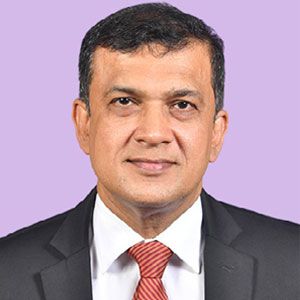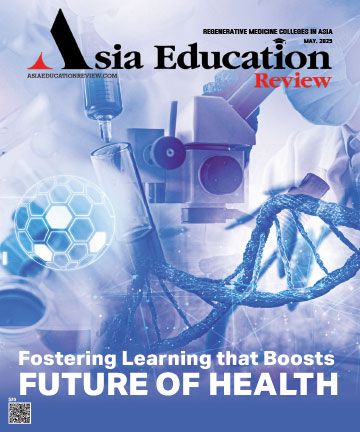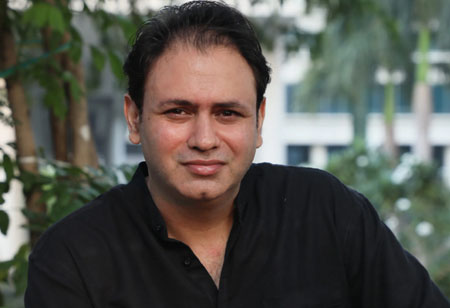University Of Peradeniya: Where Nature & Legacy Meet Cutting-edge Research & Medical Education

Prof. Saman Nanayakkara
Dean - Faculty of Medicine
Despite the numerous geopolitical instabilities that it has witnessed over the last decade, Sri Lanka has now undergone a change and is emerging as one of the most sought-after destinations for education in South-Asia. This can be largely attributed to the proactive role that the Sri Lankan government has been playing by taking-up numerous initiatives to make education accessible to all masses and also nourish the education landscape in the country. With a literacy rate of 92 percent, which is among the highest in whole of Asia, the island nation thus boasts of having a highly structured and efficient higher education system comprising mainly of 17 state universities and many other private universities offering a diverse range of educational courses, programs and certifications. The foremost among those is the University of Peradeniya.
Formerly known as University of Ceylon, the institute was established during the British regime in 1942 in Kandy as Sri Lanka’s first residential autonomous university and later was rechristened as the University of Peradeniya. Today, sprawling across a 2,000- acre lush green area, the university campus is also home to a diverse variety of flora & fauna, numerous water bodies, arches, creepers and other natural elements, making it a one-of-its-kind ‘Garden University’. Yet another highlight of the University of Peradeniya is its beautiful gold & maroon coloured university crest comprising of a lion, Sanskrit wordings and lotus petals.
Explaining in his own words, Prof. Saman Nanayakkara, Dean (Faculty of Medicine),University of Peradeniya proudly elucidates, “Our university crest comprises of the symbol of a lion in the centre, surrounded by Sanskrit words and lotus petals arranged in a circular manner. While the lion symbolizes our nation, the university motto ‘Sarvasya Locanam Sastram’ translates to ‘knowledge is the eye unto all’, and the lotus petals symbolize purity and wisdom. These key aspects have been the foundational pillars of our university”.
Variety of Educational Courses to Choose from
As one of the pioneer universities of Sri Lanka, University of Peradeniya comprises of nine faculties, namely Arts, Science, Medicine, Dental Sciences, Allied Health Sciences, Veterinary Medicine & Animal Science, Agriculture, Engineering, and Management. Additionally, the university also consists of four postgraduate institutes, including Postgraduate Institute of Agriculture, Postgraduate Institute of Humanities & Social Sciences, Postgraduate Institute of Medical Sciences, and Postgraduate Institute of Science.
Further, it also has around 20 centres & units that include Agricultural Biotechnology Centre, Centre for Environmental Sustainability, Centre for Quality Assurance, Centre for Research in Oral Cancer, Centre for Study of Human Rights, Information Technology Centre, Centre for Distance & Continuing Education, Human Resource Development Unit, University Research Council and many others.
Owing to such broad array of courses being offered, University of Peradeniya today has about 15,000 undergraduate students, 15,000 postgraduate students from different academic fields, 1500 academic staff and a total staff of around 3,000.
“Our primary vision is to provide a uniquely transformative experience for students, staff and partners, while also producing and implementing innovative research & outreach programs that are anchored in our founding values and principles. We are second to none in providing a range of innovative educational courses, teaching programs, professional certifications and outreach initiatives that transform students into thoughtful and competent graduates who are socially-responsible, gender-sensitive, environment-conscious and altruistic”, explains Prof. Saman.
Imparting World-class Medical Education
The Faculty of Medicine at University of Peradeniya comprises of 18 departments, namely Anaesthesiology & Critical Care, Anatomy, Biochemistry, Community Medicine, Family Medicine, Forensic Medicine, Obstetrics & Gynaecology, Medicine, Medical Education, Microbiology, Paediatrics, Parasitology, Pathology, Pharmacology, Physiology, Psychiatry, Radiology and Surgery. Further, it also consists of units such as South Asian Clinical Toxicology Research Collaboration (SACTRC), Centre for Education Resource & Training in Kidney diseases (Certkid), Nuclear Medicine unit, Hypertension Research Centre (HRCPe), numerous laboratories and research facilities that not only support research in various cutting-edge and emerging fields of medicine, but also helps impart formal education curriculum & practical sessions for undergraduate & postgraduate students and be shared for clinical services as well.
Some of the prominent laboratories are the laboratories for biochemical analysis, microbiology, histopathology, parasitology, urogynaecology, respiratory medicine, neurophysiology, chemical pathology and forensic medicine. In addition to this, the Department of Radiology & Nuclear Medicine Unit along with its affiliated hospitals are also equipped with modern radiology infrastructure & equipment such as CT, MRI, DSA, gamma cameras, DEXA scans, DTPA scans and DMSA scans.
With 176 teaching staff, the Faculty of medicine consists of many renowned and highly experienced professionals from diverse medical fields. These distinguished individuals not only impart education to undergraduate and postgraduate students, but are also involved in cutting-edge research both within Sri Lanka and abroad. Prof. S A M Kularatne, Prof. Indika Gawarammana, Prof Samath Dharmaratne, Prof. Tharaka Dassanayake, Prof. Vajira Weerasinghe are a few of the leading researchers of the faculty.
Prof. S A M Kularatne has been part of many studies and research programs pertaining to tropical medicine, dengue, and leptospirosis, and Prof. Indika Gawarammana is the Chairman of South Asian Clinical Toxicology Research Collaboration (SACTRC) and is focused on suicide prevention, prevention of drug overdose and production of antivenoms for snake bites in Sri Lanka”, Prof. Saman further adds.
Prof. Joseph Sriyal Malik Peiris an alumnus of the faculty is a renowned virologist who is the leading scientist of the team that isolated SARS virus. “Many members of the Faculty of medicine are not only involved in clinical, teaching, research and administrative work across various clinical settings, but have also been playing an active role in decision making and policy formulation in health services for the government of Sri Lanka”.
Exploring Beyond Horizons
Having signed an MoU with Bhutan government, University of Peradeniya has been getting 8-12 students from Bhutan for every batch over the last 20 years. Currently having around 100 overseas students for resident programs and short-term elective appointments from Bhutan, Middle East, United Kingdom, Australia, Bangladesh, Iran and many other countries. The university plans to expand its educational and residential facilities for foreign students further.
Additionally, it is also looking forward to expanding its laboratory research facilities and will soon be replacing its existing equipment with modern MRI and DSA capabilities as well. The university will also be expanding its hospital and clinical services as well as facilities for degrees such as MPhils & PhDs to accommodate more students, with its new multi-storeyed postgraduate facility expected to be completed over the next few years.
🍪 Do you like Cookies?
We use cookies to ensure you get the best experience on our website. Read more...



